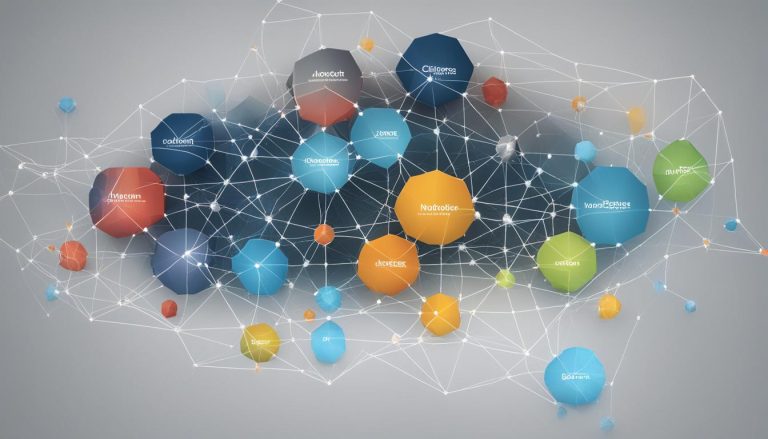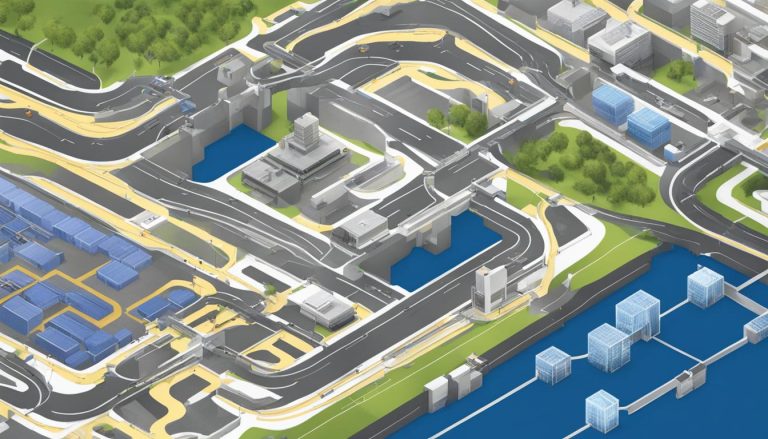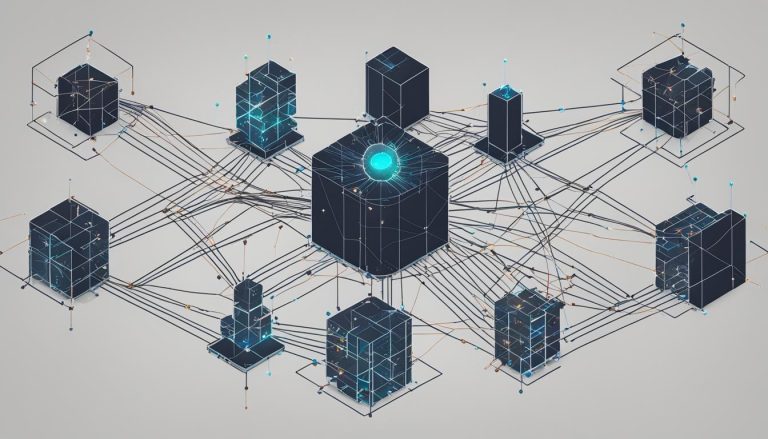Hello, my name is Sarah, and today I’ll be taking you through the fascinating world of network packets. In this article, we will explore the definition, analysis, capture, and structure of network packets. Whether you’re new to the concept or looking to deepen your understanding, you’ve come to the right place.
Network packets are the building blocks of data transfer over computer networks, such as the internet. These packets consist of three key components: the packet header, payload, and trailer. The packet header contains instructions and address information, while the payload carries the actual data being transmitted. The trailer may include error-checking data. Understanding the structure of network packets is essential for efficient and reliable data transmission.
Key Takeaways:
- Network packets are the basic units of data transferred over computer networks.
- They consist of a packet header, payload, and trailer.
- Packet analysis and capture are essential for troubleshooting network communications.
- The structure of a packet enables efficient and reliable data transfer.
- Network packets play a crucial role in the seamless and secure communication of data.
What Are the Parts of a Network Packet?
A network packet is divided into three main parts: the header, payload, and trailer. Each part serves a specific purpose in the transmission and delivery of data.
The Network Packet Header
The header is the first part of a network packet and contains crucial information about the packet itself and its destination. It includes details such as the version of the packet, its length, type of service, total length, identification, flags, fragment offset, time to live, protocol, source address, destination address, options, and header checksum. This information is essential for proper routing and delivery of the packet.
The Network Packet Payload
The payload is the actual data being transmitted within the network packet. It can consist of various types of data, such as text, images, audio, or video. The payload holds the information that needs to be sent from the source to the destination. This data is encapsulated within the packet and is extracted at the receiving end for processing or display.
The Network Packet Trailer
The trailer is the final part of a network packet and typically includes error-checking information. It ensures the integrity of the packet during transmission by verifying that the data arrived intact. The trailer may also include sequencing information, especially in cases where multiple packets need to be reassembled at the destination. By checking for errors and maintaining correct sequencing, the trailer helps ensure the reliable delivery of data.
To summarize, a network packet consists of three essential parts: the header, payload, and trailer. The header contains various packet-specific information, while the payload holds the actual data being transmitted. The trailer ensures the integrity and sequencing of the packet. Understanding the parts of a network packet is crucial for analyzing and troubleshooting network communications.
Why Use Packets for Data Transfer?
Packets are the go-to method for efficient and reliable data transfer over computer networks. The use of packets brings several benefits that make it the preferred choice in modern network communication. One of the key advantages of using packets is that they allow data to be divided into smaller chunks. This division improves transmission rates and enables multiple devices to share the same connection without congestion. By breaking data into manageable packets, the overall efficiency and performance of the network are enhanced.
Packet switching, the method used for transmitting packets, offers significant advantages over circuit switching. Unlike circuit switching, which establishes a dedicated and continuous communication path, packet switching allows for routing data through different paths. This flexibility minimizes the risk of data loss and ensures optimized network efficiency. Additionally, packet switching can handle various types of data, including voice, video, and text. This versatility makes it suitable for the diverse communication needs of modern networks.
Efficient data transfer is another crucial benefit of using packets. Due to their smaller size, packets can be transmitted more quickly and easily than larger blocks of data. The fragmentation of data into packets enables faster processing and delivery, resulting in reduced latency and improved overall network performance. Moreover, packets can be queued, prioritized, and transmitted based on the network’s capacity, ensuring efficient utilization of available resources.
| Benefits of Using Packets |
|---|
| Improved transmission rates |
| Shared connection between multiple devices |
| Minimized risk of data loss |
| Optimized network efficiency |
| Ability to handle different types of data |
| Faster processing and delivery |
| Reduced latency |
| Efficient utilization of network resources |
In summary, the use of packets for data transfer provides numerous advantages, including improved transmission rates, shared connection capabilities, minimized data loss risk, optimized network efficiency, and the ability to handle various types of data. Packet switching surpasses circuit switching with its flexibility and versatility. Efficient data transfer is achieved through the fragmentation and prioritization of data. By using packets, networks can ensure faster, more reliable, and more secure communication.
Network Packet Structure and its Components
The structure of a network packet consists of three main components: the packet header, payload, and trailer. Understanding these components is essential for analyzing and troubleshooting network communications.
The packet header contains crucial information such as the source and destination addresses, packet type, length, and error-checking data. It provides instructions and address information necessary for the proper routing of the packet. Additionally, the header may include other details like the version, time to live, protocol, and options.
The payload is the actual data being transmitted within the packet. It carries the information or message that is being sent across the network. The payload can vary in size, depending on the nature of the data being transmitted. For example, it could be a simple text message or a more complex file such as an image or video.
The trailer, also known as the packet footer, is an optional component that may be included in a network packet. It typically contains additional error-checking and sequencing information to ensure the integrity and reliability of the data being transmitted.
IP (Internet Protocol) packets are a common type of network packet used for data transfer over the internet. They follow a specific packet structure, with the header containing IP addresses, version, and other relevant information. The payload carries the actual data, while the trailer may include error-checking information such as checksums.
Understanding the structure and components of network packets is crucial for network administrators, analysts, and technicians. It enables them to diagnose network issues, optimize performance, and ensure the secure transfer of data.
Conclusion
In conclusion, network packets form the backbone of data transfer over computer networks. The three essential components of a network packet – the header, payload, and trailer – work together to ensure efficient and reliable transmission of data.
By dividing data into smaller chunks, network packets improve transmission rates and enable multiple devices to share the same connection. This method, known as packet switching, offers several advantages over circuit switching, including better resource utilization and the ability to handle different types of data.
Understanding the structure and components of network packets is crucial for analyzing and troubleshooting network communications. Whether it’s analyzing IP packets or identifying error-checking data, network professionals rely on this knowledge to ensure seamless and secure communication over computer networks.
Summary of Network Packets
Network packets are the building blocks of data transfer. With their header, payload, and trailer, they optimize transmission rates, enable efficient routing, and minimize the risk of data loss. By using packets, we ensure faster, more reliable, and more secure communication over computer networks. Network packets are the secret behind the seamless flow of information online.
FAQ
What is a network packet?
A network packet is a basic unit of data that is grouped together and transferred over a computer network, such as the internet.
What are the parts of a network packet?
A network packet consists of three parts: the packet header, payload, and trailer.
Why use packets for data transfer?
Packets allow for efficient and reliable data transfer, as they can be divided into smaller chunks and routed through different paths.
What is the structure of a network packet?
The structure of a network packet includes the packet header, payload, and trailer. The header contains important information, while the payload carries the actual data being transmitted.
How do network packets ensure reliable communication?
Network packets ensure reliable communication by finding the best route to their destination and minimizing the risk of data loss.
Hi, I’m Mark, the author of Clever IT Solutions: Mastering Technology for Success. I am passionate about empowering individuals to navigate the ever-changing world of information technology. With years of experience in the industry, I have honed my skills and knowledge to share with you. At Clever IT Solutions, we are dedicated to teaching you how to tackle any IT challenge, helping you stay ahead in today’s digital world. From troubleshooting common issues to mastering complex technologies, I am here to guide you every step of the way. Join me on this journey as we unlock the secrets to IT success.


